Drapetsona : Oil One the possible source of strong odour, environmental pollution
- Written by E.Tsiliopoulos
Testing by scientific research centre Demοkritos team regarding the stench and pollution in Drapetsona and Keratsini ‘points to’ Oil One facilities as a possible source.
by Kostas Tsaousis
First appeared in Greek in in.gr on 7 June 2021, and in English on 9 June 2021. All photos, graphs, and charts courtesy of in.gr
Parents and even more so grandparents of students of Drapetsona’s Second Primary School – at the junction of Georgiou Afara and Eleftherios Venizos Streets – may not be aware of what methanethiol is but they are certainly aware of the odour in the air that they breathe.
“It is similar to the odour of rotten lettuce,” a National Centre for Sciencific Research “Demokritos” researcher said.
The data on a veritable ‘party of pollutants’
Methanethiol belongs to the family of methanethiols that are “constituents of natural gas and have a strong, unpleasant odour.”
The same stands true for 2-Butanethiol (aka sec-butyl mercaptan), which is noted on page 25 of a recent study undertaken through the P.3 (Pi three) project by the researchers of EKEFE Dimokritos on behalf of the Attica prefecture.
The study entitled “The Quality of the Environment as Determined through the use of Specialised Chemical Analyses and Computational Tools on the Simulation of the Spread of Pollution and the Contribution of the Sources of such in the Broader Region of the Municipalities of Drapetsona-Keratsini and Elefsina” shows that 2-Butanethiol displayed the “highest levels during odiferous days.”
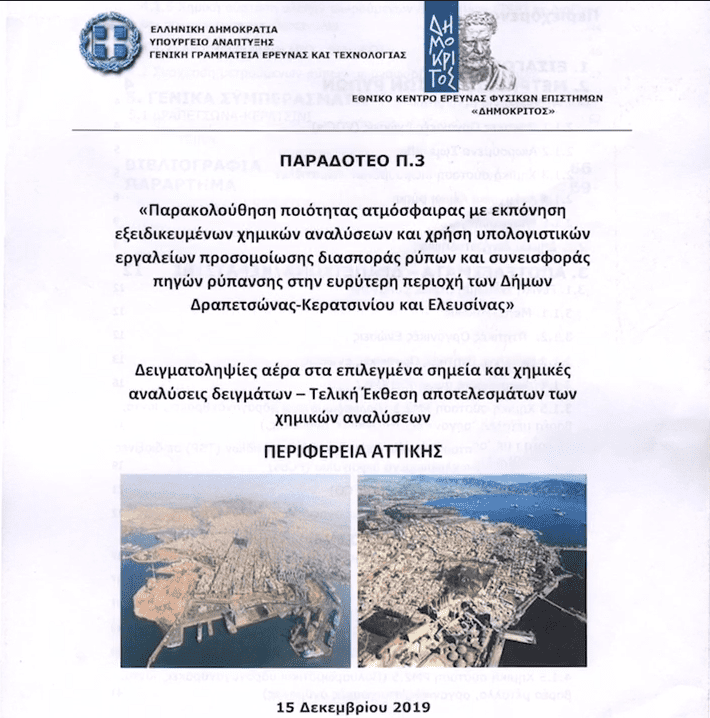
Those “odiferous” days – to use a polite expression – have become a norm for the neighborhoods of Drapetsona and Keratsini where Demokritos conducted its scientific research (at five stations in Drapetson-Keratsini including the Second Primary School of Drapetsona) between February and October, 2019, and where a veritable party of pollutants has been taking place.
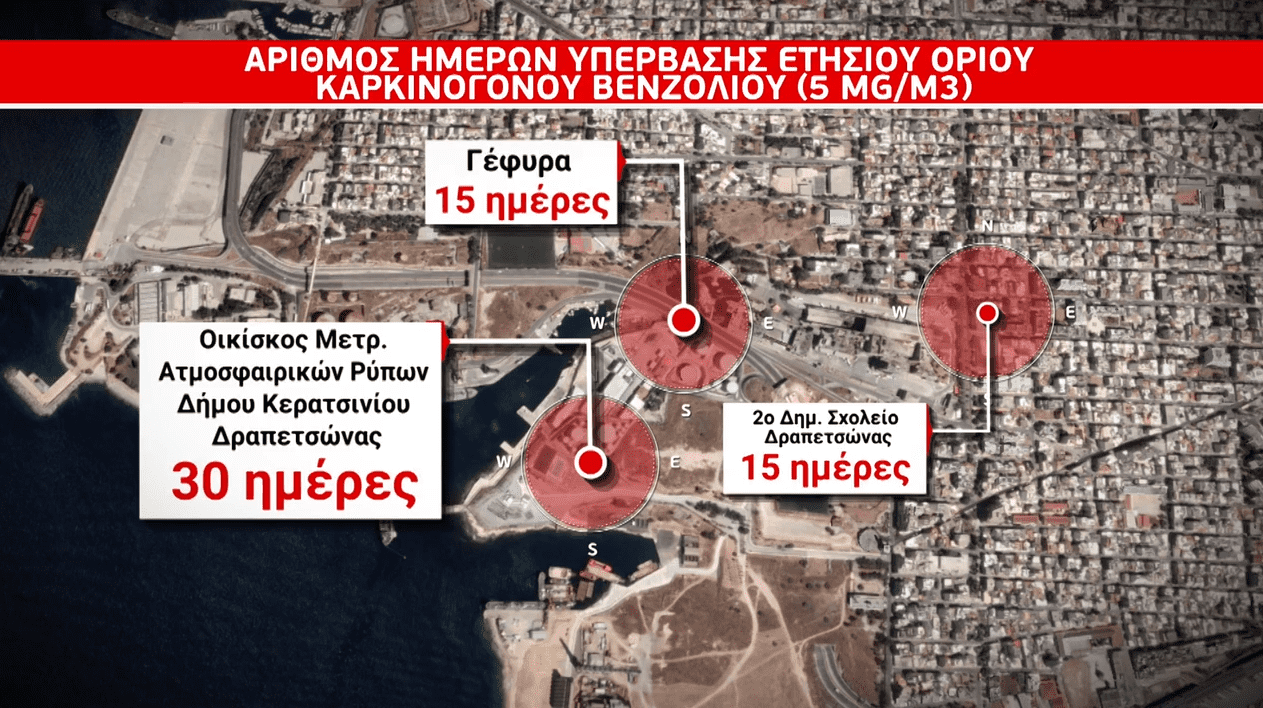
The graph shows that next to the Oil One facilities, the pollution is a daily phenomenon. But even a short distance from there, in the measuring stations, the stench was registered very often.
Researchers are aware of what the data signifies and all it represents for the impact on the environment and the safety of local citizens.
They note indicatively that, “Meracaptans are a constituent element of natural gas and have an unpleasant odour. Unprocessed petroleum products contain CH3SH, CH3CH2SH, and CH3CH2CH2SH.

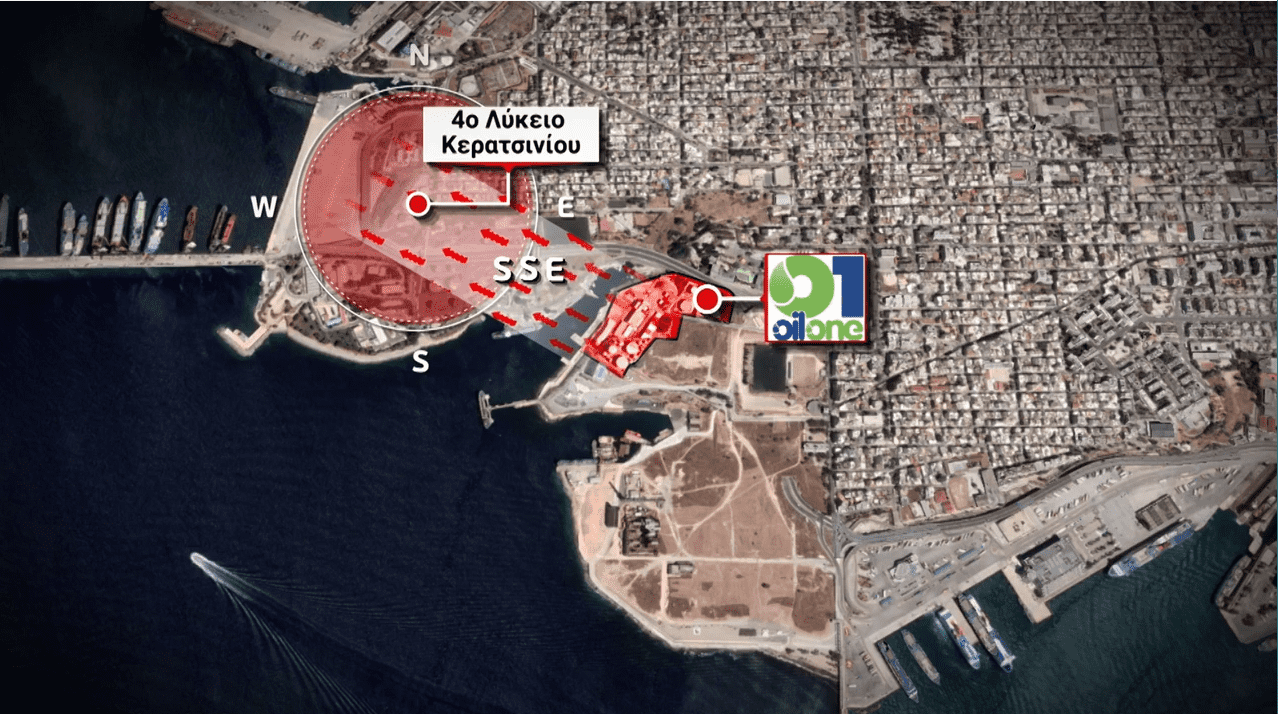
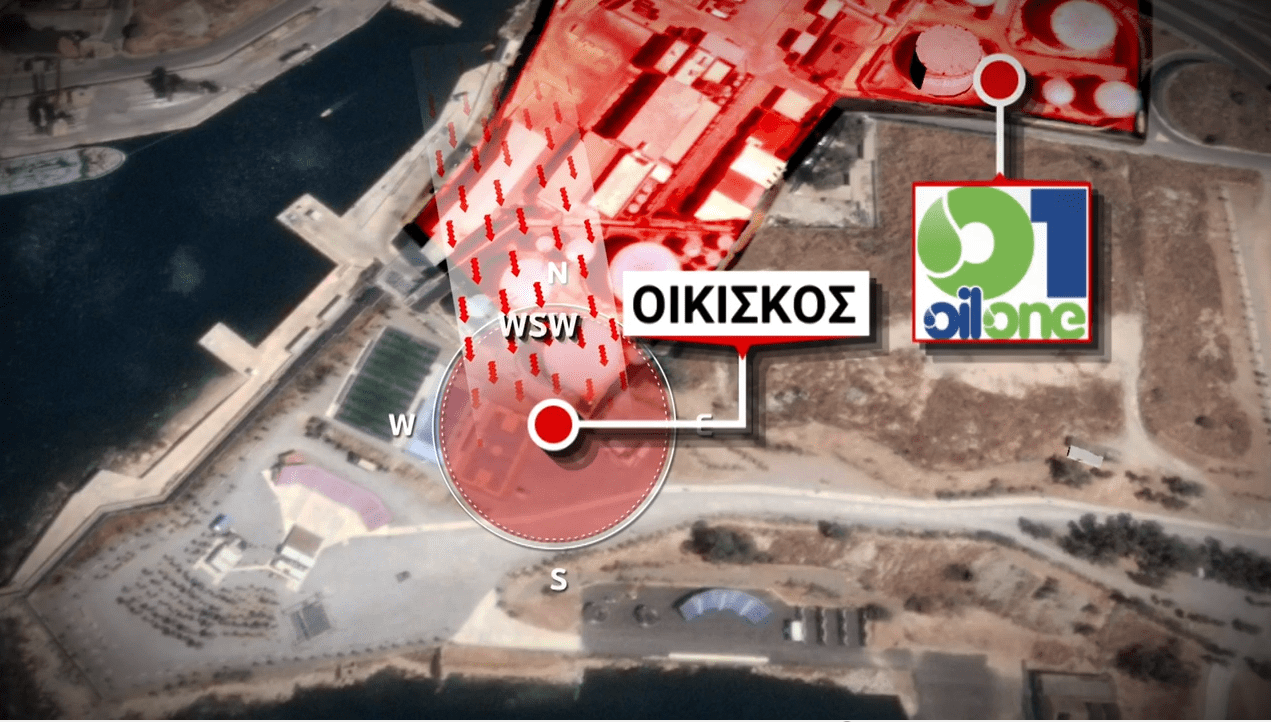
Sec-butyl mercaptan, which had the highest values on odiferous days, is a colourless combination with a strong and heavy scent. It is soluble in water and is used as an additive to natural gas to give it an intense odour so that it can be detectable in the event of a leak as natural gas has no scent on its own. Studies have linked the odour in the environment to such a combination.
The general population can be exposed to sec-butyl mercaptan through the inhalation of air in the environment near natural gas refineries and works connected to its use as an additive to natural gas.”
This observed data is noteworthy. On pages 24-25 of the conclusions of the same study the following is stated, “There is an increase of odiferous sulfide compounds (mercaptans, theophenes, and sulfides) as well as of airborne organic compounds during the days that the odour was detected.
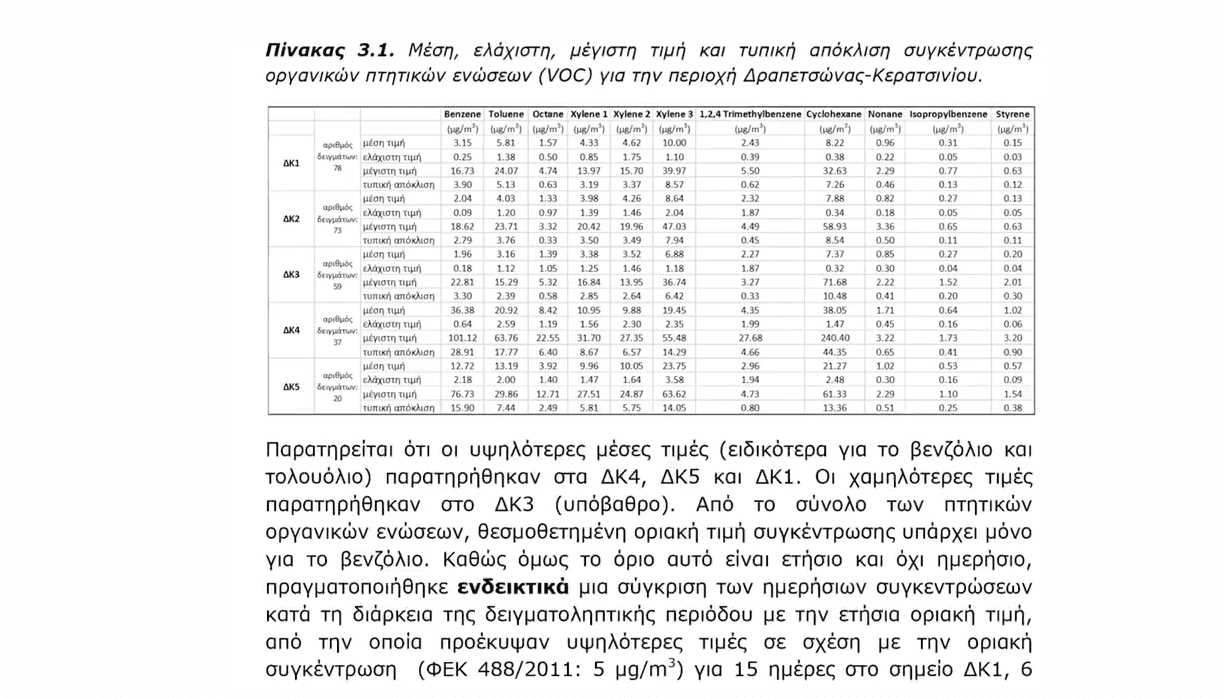
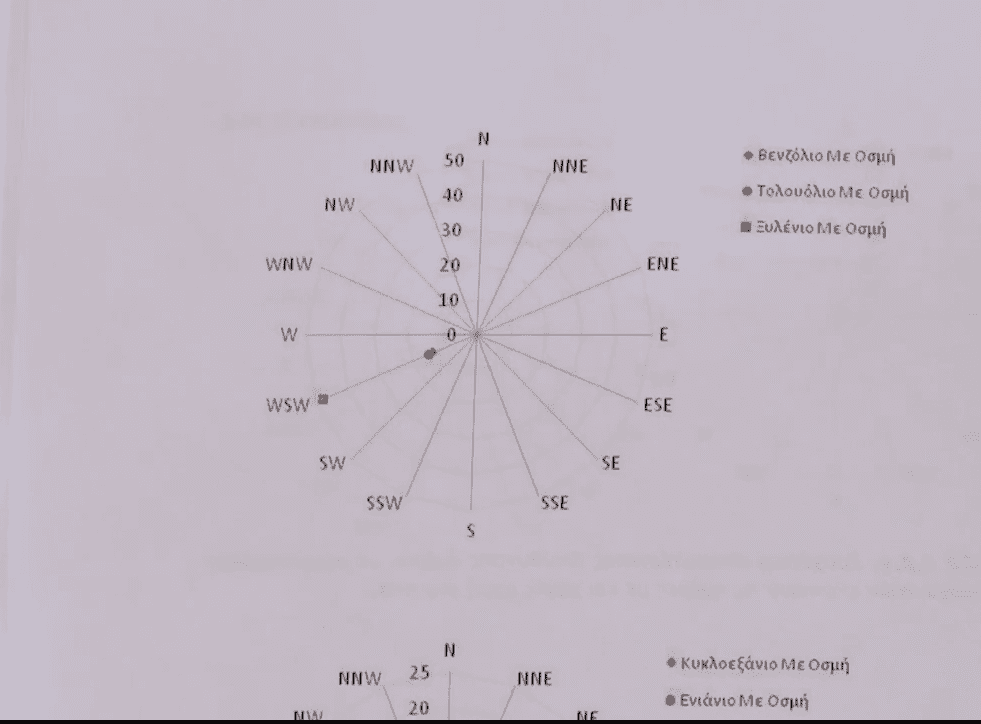
Specifically, from the total of sulfide compounds the concentrations of Carbonyl sulfide, Methyl mercaptan, Dimethyl sulfide, 1-Propanethiol, sec-butylmercaptan, n-Butylmercaptan, Dimethyldisulfide, 2-methyl-thiophene, Diethyl disulfide, Diphenyl-sulfide were found to be increased during days when there was a discernable odour as compared with days with no discernible odour.
The differences produced significantly different results for 2-methyl-thiopheneone there were 0.0347, days without odour: 0.0134µg/m3, P=0.015) and sec-butylmercaptan (days with odour presence: 0.7754), days without odour presence: 0.4582 µg/m3, P=0.033).
The differences produced statistically significant results of 0.05 while as regards Methylmercaptan the result was also significant – 0.1 percent – (days of odour 0.0126, days, without odour: 0.0087µg/m3, P=0.076).
As regards aromatic airborne organic unions the concentration was measured as higher during odiferous days as compared to non-odiferous days.
In particular this is true as regards xylene, especially for ethylbenzene (odiferous days): 32.1 µg/m3, days without an odour: 16.7 µg/m3, P=0.076), isopropylbenzine (days with odour : 0.41 µg/m3, days without an odour 0.30 µg/m3, P=0.009) and styrene (days with an odour: 0.22 µg/m3, days without an odour: 0.145 µg/m3, P=0.044), and the result was deemed statistically significant (t-test).
High concentrations of benzene
The report notes high concentrations of benzene, which is considered a carcinogen.
As Demokritos researchers say, “A comparison between daily concentrations during the sampling period with the annual borderline number was conducted indicatively. This yielded higher values as compared to the borderline concentration (Government Gazette, 488/2011: 5 µg/m3) for 15 days from point ΔΚ1, 6 days at ΔΚ2, 4 days at ΔΚ3, 30 days at point ΔΚ4 και15 days at point ΔΚ5”.
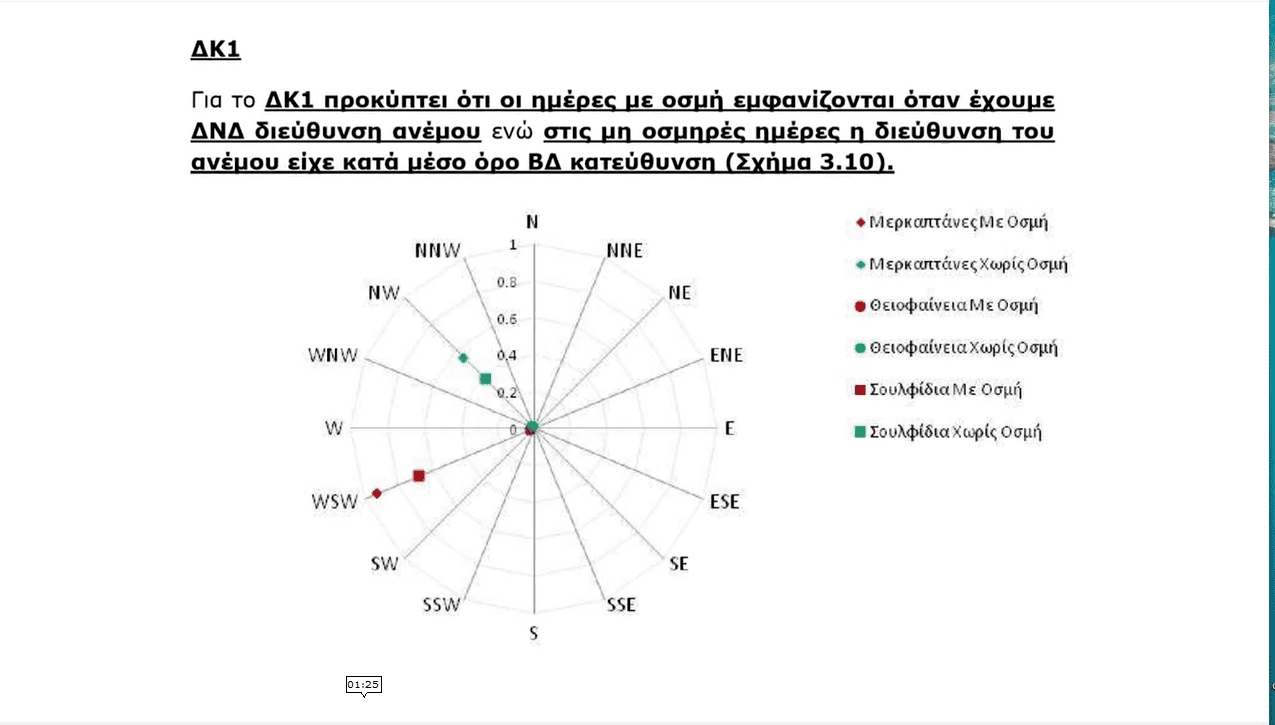
Possible common origin
Looking at ongoing tests and through the plethora of technical terms and through numbers and charts a persistent and vexing conclusion emerges: The fact that odiferous substances follow an upward trend on days that intense odours are registered indicates a common origin of these odours”.
In other words, we have tests that echo the cry of desperation of the residents of Drapetsona and Keratsini.
It has little to do with a Netflix series in the Third World but rather with the difficult situation in the neighbourhoods of Piraeus.
All this is taking place even as warnings have been sounded over a “possible common origin” of said atmospheric pollution, which should have activated every investigative body available to the state.
The atmospheric pollution cannot be disputed no matter how many inspectors from the Southern Greece Regulative Agency may come down with or without measuring instruments to the streets of Drapetsona and Keratsini.
Let us not forget that the repercussions of the current atmospheric conditions are cumulative.
The damage done today from the inhaling of pollution can appear in the human body 5-10 years later, depending on one's overall medical profile. That which today may be a simple breathing difficulty – common in older people – may lead in the coming years to lung diseases and cancers.
Undoubtedly, the measurements released by Demokritos leave no room for complacency for the country’s political leadership which must come to terms with its obligations and duties and with what the “possible origin” of pollution is (a polluting industrial facility).
There cannot be many doubts. The measurements carried out by Demokritos scientists in the 4-5 sampling areas demonstrate that days with a high level of recorded pollutants coincide with days with winds blowing from the direction of Mr. Dimitris Melissanidis’ Oil One facility.
The facilities of Oil One in Drapetsona are used by another Melissanidis’s affiliated company, Hellenic Environmental Centre S.A. (HEC), a company specializing in oil waste management. HEC has a contract with Oil One to use the Drapetsona facilities and the two companies are also registered as a joint venture. HEC was at the centre of the crisis that led to the bankruptcy of Aegean Marine Petroleum Network, a NYSE listed bunkering company, also founded by Melissanidis who sold his stake in Aegean in 2016. However, at the end of 2017, there was a proposal for Aegean to buy HEC through an exchange for shares, a process that minority shareholders considered an attempt by Melissanidis to regain control of Aegean. The sale of HEC was cancelled and an internal audit of Aegean found evidence of misappropriation totaling $300 million in cash and assets. Mr Melissanidis is one of the defendants in a securities class action suit by investors who purchased or otherwise acquired Aegean Marine Petroleum Network securities. The US Department of Justice was informed about the Audit and Aegean Marine Petroleum Network received a grand jury subpoena from the U.S. Attorney’s Office for the Southern District of New York in connection with suspected felonies. The American Ambassador in Greece, Geoffrey Pyatt has shown a particular interest in this case.
Related items
-
 Mitsotakis forced into dual talks as farmer unity fractures
Mitsotakis forced into dual talks as farmer unity fractures
-
 Maria Karystianou’s political move divides opinion — Criticisms after early acclaim
Maria Karystianou’s political move divides opinion — Criticisms after early acclaim
-
 JPMorgan: Greek bonds passed the convergence test – Investors are in a repositioning phase
JPMorgan: Greek bonds passed the convergence test – Investors are in a repositioning phase
-
 Vasilopita cutting by Patriarch Bartholomew in Constantinople marred by series of omens - Blackout and broken knives
Vasilopita cutting by Patriarch Bartholomew in Constantinople marred by series of omens - Blackout and broken knives
-
 IRIS expands limits for instant mobile payments in Greece
IRIS expands limits for instant mobile payments in Greece
Latest from E.Tsiliopoulos
- Mitsotakis forced into dual talks as farmer unity fractures
- Maria Karystianou’s political move divides opinion — Criticisms after early acclaim
- JPMorgan: Greek bonds passed the convergence test – Investors are in a repositioning phase
- Vasilopita cutting by Patriarch Bartholomew in Constantinople marred by series of omens - Blackout and broken knives
- IRIS expands limits for instant mobile payments in Greece

